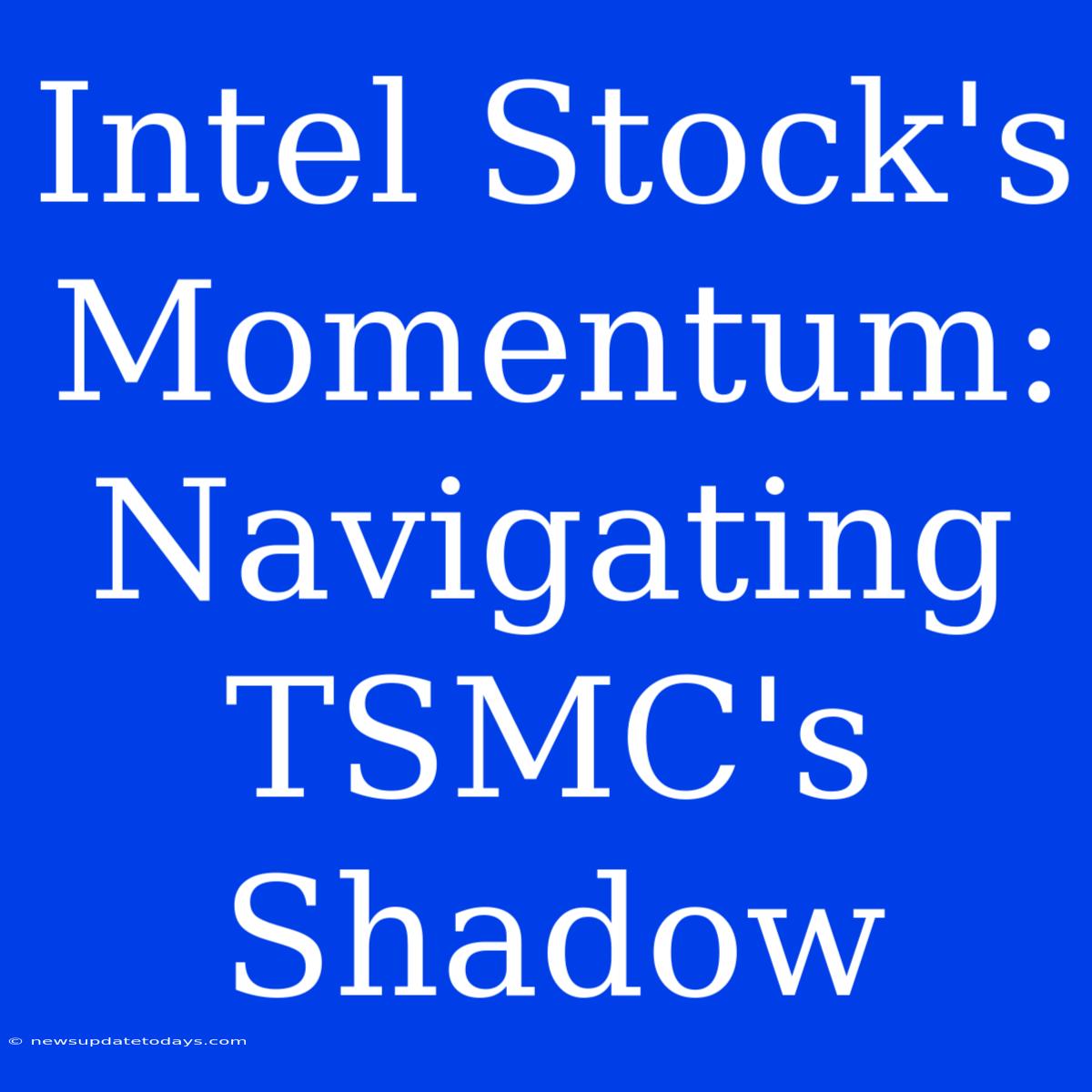Intel Stock's Momentum: Navigating TSMC's Shadow
Intel, a titan of the semiconductor industry, finds itself in a fascinating position. While boasting a rich history and substantial market share, the company is grappling with the formidable shadow cast by Taiwan Semiconductor Manufacturing Company (TSMC). This article delves into Intel's current momentum, examining the challenges posed by TSMC's dominance and exploring the strategies Intel is employing to regain its competitive edge.
TSMC's Unassailable Lead?
TSMC's current market leadership is undeniable. Their advanced manufacturing processes and robust client base, including giants like Apple and Qualcomm, have solidified their position as the world's leading independent foundry. This poses a significant hurdle for Intel, which is aiming for a resurgence in both its manufacturing capabilities and its overall market share.
Intel's Counter-Strategies: A Fight for Relevance
Intel isn't simply standing idly by. They've initiated several crucial strategies to combat TSMC's dominance and revitalize their brand:
1. Investing Heavily in Manufacturing: Intel's ambitious investments in new fabrication plants (fabs) represent a significant commitment to improving its manufacturing technology. The aim is to bridge the gap with TSMC in terms of process node leadership and achieve internal manufacturing superiority. This includes advancements in EUV lithography and other cutting-edge techniques.
2. IDM 2.0 Strategy: Intel's IDM 2.0 strategy involves a dual approach: internal manufacturing for their high-value chips and external foundry services for specific clients. This diversification aims to leverage their manufacturing capabilities while also competing directly with TSMC in the foundry market.
3. Focusing on Innovation: Intel is concentrating on developing innovative chip architectures and technologies, focusing on areas where they can gain a competitive advantage. This includes advancements in integrated graphics, AI acceleration, and other specialized processing units.
4. Strategic Partnerships and Acquisitions: Intel has actively engaged in strategic partnerships and acquisitions to enhance their technological capabilities and market reach. This collaborative approach expands their expertise and helps accelerate innovation.
The Path Forward: Challenges and Opportunities
Despite these efforts, Intel faces substantial challenges:
- Catching up to TSMC's technological lead: Bridging the gap in process technology requires significant investment and a flawless execution of their ambitious plans.
- Attracting clients to its foundry services: Competing with TSMC's established customer base and reputation is a major undertaking.
- Maintaining profitability amidst heavy investments: The massive capital expenditure required for new fabs puts pressure on Intel's financial performance.
However, opportunities also abound:
- Growing demand for specialized chips: The increasing demand for AI, high-performance computing, and other specialized chips presents opportunities for Intel to leverage its expertise and establish a niche.
- Potential for disruption: Intel's innovative technologies could disrupt the market and redefine the landscape of semiconductor manufacturing.
- Government support: Government incentives and initiatives aimed at boosting domestic semiconductor production can provide a significant boost to Intel's efforts.
Conclusion: A Long-Term Play
Intel's journey to overcome TSMC's shadow is a long-term endeavor. The success of their strategies hinges on the execution of their ambitious manufacturing plans, the attraction of significant foundry clients, and the continued innovation of their chip technologies. While the path is challenging, Intel's substantial resources and history of innovation suggest that they possess the potential to regain a significant share of the market and reclaim their position as a leading player in the semiconductor industry. Investors should carefully monitor Intel's progress in implementing their strategies and the resulting impact on their financial performance. The coming years will be crucial in determining the success of their turnaround efforts.

